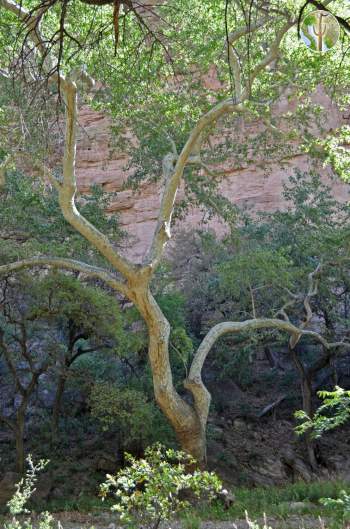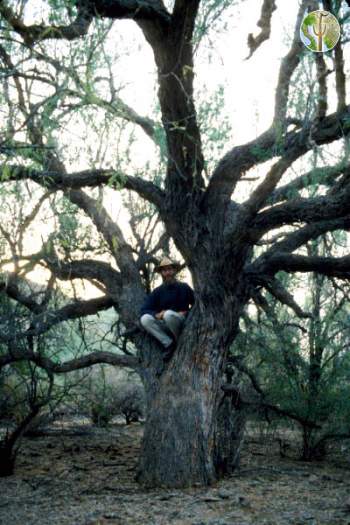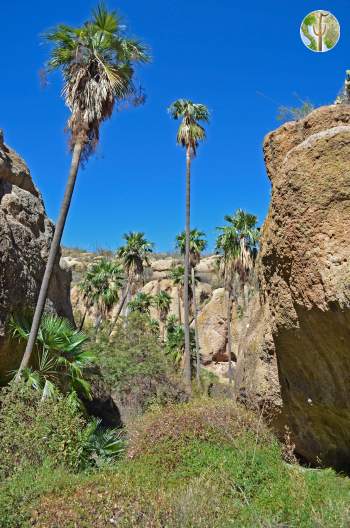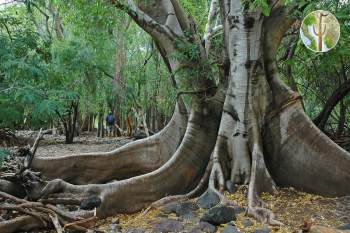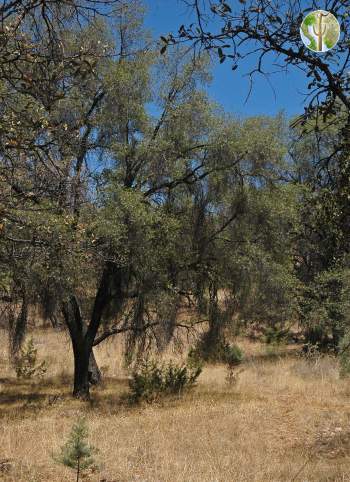Trees
Oasis at the Desert Edge: Flora of Cañón del Nacapule, Sonora, Mexico
Cañón del Nacapule cuts into the southeastern flank of the Sierra El Aguaje, a rugged volcanic range about 20 kilometers northwest of Guaymas. Nacapule is included in the Sonoran segment of the Gulf Coast subdivision of the Sonoran Desert. The bi-seasonal (summer and winter) rainfall is highly variable. Many plants of tropical origin reach their northern limits in this region or do not extend farther north in the arid coastal desert of western Sonora.
Forest Fire Histories of La Frontera: Fire-Scar Reconstructions of Fire Regimes in the United States/Mexico Borderlands
Fire is a dominant ecological process in almost all landscapes of La Frontera. Fire histories from throughout the region on the United States side of the border show that, before circa 1900, extensive surface fires occurred within pine-dominant forests at about the same frequency as wet-dry cycles related to the El Niño-Southern Oscillation, i.e., 2 to 7 year intervals (Swetnam and Betancourt 1990, 1998; Swetnam and Baisan 1996a, 1996b). Regionally synchronous fire events occurred at the rate of about 10 per century and often coincided with the most extreme wet-dry cycles.
Northern Distributional Limits Of The Mexican Willow Oak (Quercus Viminea) In Arizona, Sonora, And Chihuahua
Observations of the Sierra Madrean oak Quercus viminea in ten Sky Island mountain ranges 15 to 85 km south of the Arizona and New Mexico border in Sonora and Chihuahua help define the northern and western limits of its distribution. We also discovered it in the Patagonia Mountains of southern Arizona as far north as 15.3 km from Sonora. It is sympatric with the closely related Q. emoryi, with which it introgresses.
The Vegetation of a Desert Mountain Range as Conditioned By Climatic Factors
The southern half of the state of Arizona. may be briefly characterized as a relatively level plain studded with numerous hills and mountains. The plain rises from elevations of a few hundred feet along the Colorado River to as much as 4,500 and 5,000 feet near the New Mexican boundary. The lower elevations follow the Gila, Salt, San Pedro, and other rivers, while the higher plains surround the loftier mountains of the southeastern portion of the State.
Prosopis velutina, velvet mesquite
Maybe more than any other tree in our region, the velvet mesquite plays a vital role on our landscape. This tree is both incredibly tenacious, (sometimes) invasive, as well one of the most productive trees for wildlife.

